
-
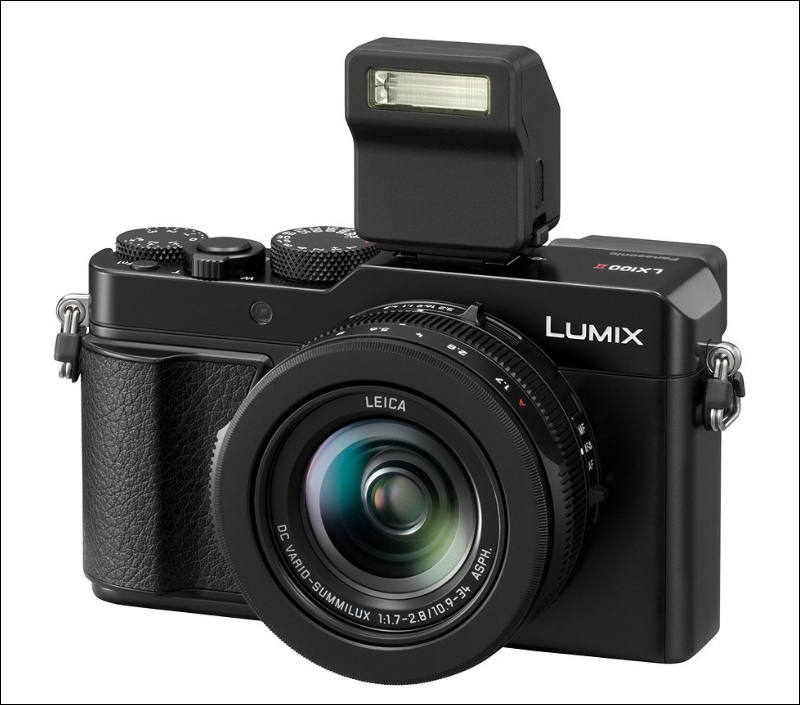
Specs
- 17mp m43 multi-aspect sensor without AA filter
- 24–75mm F1.7-F2.8 Lens
- 4K 24fps and 30fps video only, limited by 14minutes and your region (in PAL will be 25fps)
- 3840 x 2160 @ 30p / 100 Mbps, MP4, H.264, AAC
- 3840 x 2160 @ 24p / 100 Mbps, MP4, H.264, AAC
- 1920 x 1080 @ 60p / 28 Mbps, MP4, H.264, AAC
- 1920 x 1080 @ 60p / 28 Mbps, AVCHD, MTS, H.264, Dolby Digital
- 1920 x 1080 @ 60i / 17 Mbps, AVCHD, MTS, H.264, Dolby Digital
- 1920 x 1080 @ 30p / 20 Mbps, MP4, H.264, AAC
- 1920 x 1080 @ 30p / 24 Mbps, AVCHD, MTS, H.264, Dolby Digital
- 1280 x 720 @ 30p / 10 Mbps, MOV, H.264, Linear PCM
- 1920 x 1080 @ 24p / 24 Mbps, AVCHD, MTS, H.264, Dolby Digital
- Old cheap 3" low resolution (1.24Mdots) LCD
- GH4 era 2.76mdots EVF
- New simple photo filters added
- Wi-Fi and Bluetooth 4.2
- No separate charger, only USB charging
- 115.0 mm x 66.2 mm x 64.2 mm
- 392 g (including battery, memory card), 350 g (main body only)
- Color: Black
- Price hiked to $999
- Available since October at
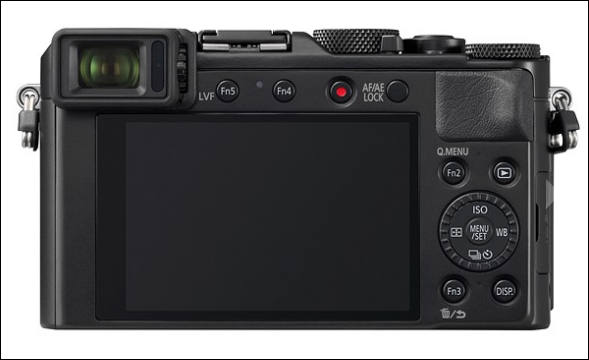
-
The FZ2500 also required you to pay to unlock VLog, so this camera wouldn't be the first non GH camera to have this anti-feature. Let's hope it avoids that nonsense.
-
4k 50/60p would be something, especially with the latest sensor. Hopefully they don't make us wait 3 months for availability like with recent cams.
-
I mean features other than VLog, I think VLog is such by default now.
-
Would this be a 1" sensor or a m4/3" sensor?
I hope it has Dual IS and decent AF. A flip screen and a bigger battery would be nice too...
-
Photos
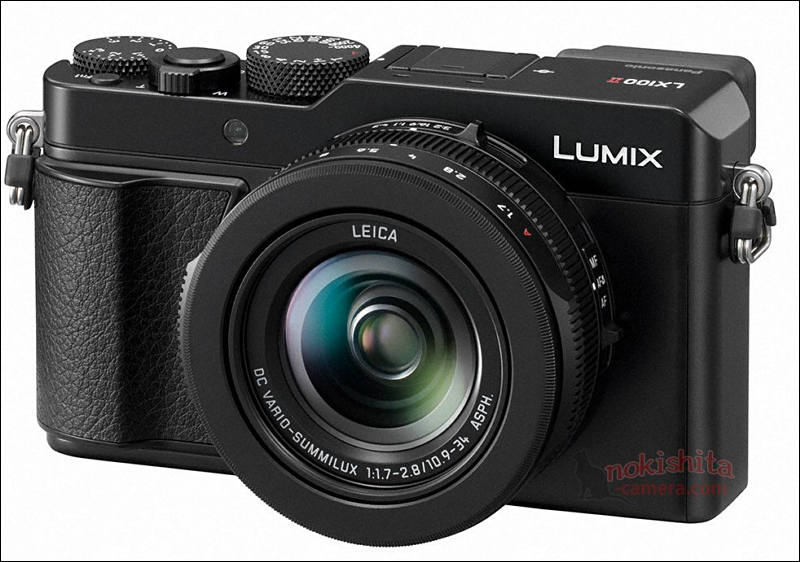
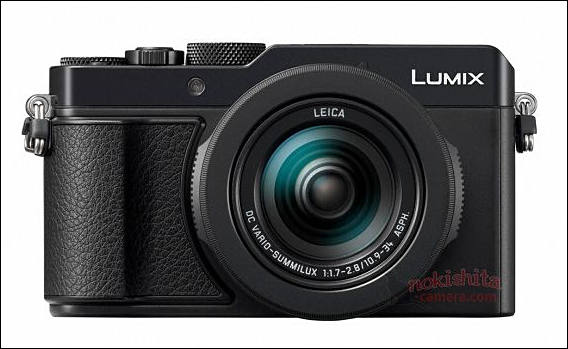
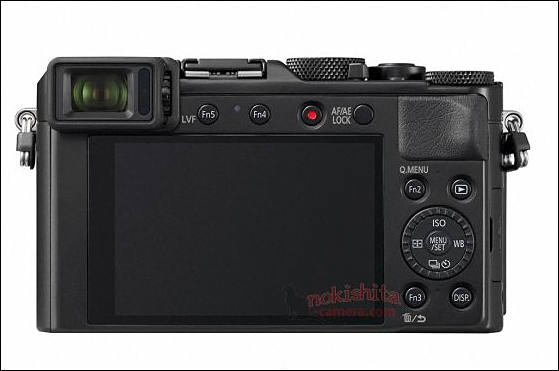
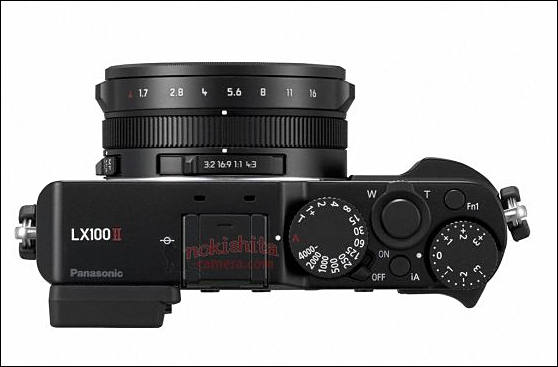

 sa4268.jpg800 x 562 - 71K
sa4268.jpg800 x 562 - 71K
 sa4269.jpg568 x 349 - 34K
sa4269.jpg568 x 349 - 34K
 sa4270.jpg559 x 371 - 27K
sa4270.jpg559 x 371 - 27K
 sa4271.jpg558 x 367 - 26K
sa4271.jpg558 x 367 - 26K -
Announcement date is still same, despite being totally stupid.
Specs
- 17MP 4/3 no AA filter, total number of pixels: 21.7Mp
- Multi aspect sensor
- LEICA DC VARIO-SUMMILUX 24-75 mm / F 1.7 – 2.8 lens
- 3.0" 1.24 million dots touch panel LCD monitor
- 2.76 million dots equivalent EVF
- Spatial recognition AF using high-speed, high-precision spatial recognition technology (DFD technology)
- “4K Photo” “Focus Select” “Focus Composite” modes
- Timelapse shooting with exposure up to 30 minutes
- Another Fn button to total of 10 (5 Fn buttons, 5 touch Fn buttons)
- “L. monochrome” “L. monochrome D” as photo style
- Wi-Fi ·and Bluetooth 4.2
- No separate charger, only USB charging
- 115.0 mm x 66.2 mm x 64.2 mm
- 392 g (including battery, memory card), 350 g (main body only)
- Color: Black
-
Happy that I have bought mine long time ago and it's still worthing itself. They don't even bothered to solve simple problems like the eyepiece cover or improve the handle (in fact the handle looks worse).
Bet they even maintained the tripod mount in the same place that makes using any QR plate impossible (you cant open the battery/sdcard door). Ohh no, they solved it altoghether with usb charging and they dont hope you ever have spare batteries.
-
Looks like a pretty lazy update from Pana. I would've replaced my original if it came with a tilting LCD and tolerable EVF.
-
UK price £849.99
-
Good luck selling it for that price.
-
PR
Panasonic is proud to introduce the LUMIX LX100 II with a large, 4/3-inch High Sensitivity MOS Sensor for the seventh generation model of Panasonic's world-renowned LX high-end compact camera series.
The LUMIX LX100 II newly integrates a total 21.77-megapixel sensor to achieve an effective 17.0 megapixels in 4:3 aspect ratio. Even the finest details can be precisely captured with the increased resolution of this new sensor. Together with a high-speed, high-performance Venus Engine image processor, it achieves superb image quality with natural, true-to-life description.
The included LEICA DC VARIO-SUMMILUX lens (35mm camera equivalent: 24-75mm) boasts a high-speed of F1.7-F2.8, and high descriptiveness in detail and resolution corner-to-corner. And, together with the large MOS Sensor, the lens also produces a stunningly beautiful defocus. At the same time, a nine-blade aperture diaphragm helps produce bokeh with smooth, circular shapes. The versatile zoom range of 24-75mm (35mm camera equivalent) is ideal for wide-ranging photography from snapshots to portraits. Notably, landscapes can be captured in dynamic 24mm ultra-wide angle in any of 4:3, 3:2 or 16:9 aspect ratios, thanks to the multi-aspect capability. An aperture ring allows direct, intuitive aperture control to take maximum advantage of this high-speed lens. A minimum working distance of 3cm is all that is required to take stunning macro shots with intricate detail.
The LUMIX LX100 II integrates an LVF (Live View Finder) with approximately 2760K-dot equivalent resolution and approximately 100 percent color reproduction. This 16:9 Wide Screen LVF boasts approximately 1.39x / 0.7x (35mm camera equivalent) magnification and 100percent field of view. The new 3.0-type (inch) rear monitor increases resolution to approximately 1240K-dot, enabling touch control. A variety of advanced functions are featured on the LUMIX LX100 II to inspire and accommodate the potential of advanced photographers. It allows direct, intuitive control with dedicated rings and dials, such as an aperture ring, control ring, shutter speed dial and exposure compensation dial.
The LUMIX LX100 II capably records smooth, high-resolution 4K video in 3840x2160 at 30p or 24p in MP4. Taking full advantage of 4K technology, users can capture fleeting photo opportunities at 30 fps in 8-megapixel equivalent resolution to save as a 4K PHOTO. Auto Marking, Sequence Composition, Post Focus, Focus Stacking and Light Composition are newly added to make 4K PHOTO even easier to use in more creative ways.
The LUMIX LX100 II is also superior in response. With DFD (Depth from Defocus) technology, accuracy and speed are improved to achieve Light Speed AF of approx. 0.10 sec* to capture fleeting photo opportunities. High-speed burst shooting is possible at 11 fps in full resolution.
For more creative freedom, Filter, Creative Panorama and Photo Style are available. L.Monochrome and L.Monochrome D mode are also added to Photo Style, making it possible to shoot dynamic monochrome photos with emphasized highlights and shadows while preserving the details. Plus, grain effect can now be adjusted in all monochrome modes in Photo Style. Other practical functions include Focus Peaking, Level Gauge, Aperture bracket, Focus bracket, WB (white balance) bracket and highlight/shadow control. The LUMIX LX100 II can also develop RAW images into JPEG in-camera.
The LUMIX LX100 II includes Bluetooth® and Wi-Fi® connectivity to offer a more flexible shooting experience and instant image sharing with easy operation. Bluetooth 4.2 (called BLE: Bluetooth Low Energy) compatibility enables constant connection with a smartphone or tablet with minimum power consumption. It also complies with convenient USB/AC power charging.
New, Large 4/3-inch High Sensitivity MOS Sensor and Venus Engine
The LUMIX LX100 II incorporates a new 4/3-type (inch) total 21.77-megapixel1 High Sensitivity MOS Sensor to acquire even higher resolution than its predecessor, the LX100. It boasts multiple aspect ratios (4:3/3:2/16:9) and the effective area in the 4:3 aspect ratio is 17.0-megapixel, which is more than approx. 1.6x larger than that of a 1-inch sensor. This new high-resolution MOS Sensor maintains an excellent S/N ratio for a dramatic reduction in noise, even when shooting at a high ISO setting at max. ISO 25600 corner-to-corner reproduces the finest details, and an impressive defocus with a shallow depth of field from wide to tele-end, making the subject stand out.
The Venus Engine renders vibrant, high-quality, true-to-life images with excellent resolution, high contrast and impressive color reproduction. The advanced Multi-process NR (Noise Reduction) applies effective noise reduction and detail processing according to each component frequency. Plus, Random Filter granulates chromatic noise to blend into the image even more naturally. As a result, the maximum ISO 25600 (Extended) is achieved. A sharpening engine controls over wider frequency range by adjusting the amount of sharpness according to the frequency level, resulting in a faithful stereoscopic effect. The Venus Engine also excels in color reproduction with accurate evaluation of each color, similar in color phase, i saturation, and luminosity. With its 1728-zone metering, more precise WB adjustment and natural image rendering are available.
The combination of the High Sensitivity MOS Sensor and the Venus Engine achieves stunning picture quality that rivals that of DSLRs.
F1.7-2.8 / 24-75mm LEICA DC VARIO-SUMMILUX lens and 3cm macro shot
The LUMIX LX100 II incorporates a LEICA DC VARIO-SUMMILUX lens system (F1.7-F2.8), providing 3.1x optical zoom (35mm camera equivalent: 24-75mm) with POWER O.I.S.(Optical Image Stabilizer). Comprising 11 elements in eight groups, including two ED lenses and five aspherical lenses with eight aspherical surfaces, this advanced lens unit achieves remarkably high contrast and resolution. The lens unit boasts F2.8 high speed, even at the tele-end, allowing handheld shooting in low-lit situations or adding beautifully defocused background on both photo and video. To achieve further downsizing to fit the large 4/3-inch sensor in the camera body, every lens group is now designed to move while Panasonic's original centering technology is applied to the lens alignment to enhance sharpness. Adoption of five aspherical glass lenses and optical design optimization achieve beautiful, evenly smooth defocus with an invisible edge line; the "onion ring effect" is suppressed by Panasonic's unique aspherical lens mold technology. In addition, a nine- aperture diaphragm helps produce bokeh with smooth, circular shapes.
The versatile zoom range of 24-75mm (35mm camera equivalent) is suitable for wide-ranging photography from snap to portrait. Notably, landscapes can be captured in dynamic 24mm ultra-wide angle in any of 4:3, 3:2 or 16:9 aspect thanks to the multi-aspect capability. The aspect can be set quickly with the aspect switch on the lens barrel. A Multi-Aspect Bracket allows shooting still images in 4:3, 3:2, 16:9 and 1:1 aspect ratios simultaneously with a single shutter release.
Stunning macro shots can be shot with minimum working distance of 3cm (wide) and 30cm (tele) to describe the detail of the subject, despite its large-sized sensor. It also complies with maximum 1/4000 (mechanical) and 1/16000 (electronic) high shutter speed.
Intuitive control and quick response
The LUMIX LX100 II integrates a LVF (Live View Finder) with 2764K-dot equivalent high resolution and approximately 100percent color reproduction. This 16:9 Wide Screen LVF boasts approximately 1.39x / 0.7x (35mm camera equivalent.) magnification and 100percent field-of-view. It comes with the Eye Sensor that automatically turns ON/OFF according to the photographer's action. The Eye Sensor AF starts auto focusing immediately when the photographer looks into the LVF to prevent missing the shooting opportunity. The image output between the LVF and the rear monitor is switched automatically with the eye sensor on the LVF, which features options of sensitivity -- high, low and off -- to reduce false operation caused by touching the rear monitor.
The LUMIX LX100 II is equipped with a variety of advanced functions to spur potential of advanced photographers. It allows direct, intuitive control with dedicated rings and dials, such as aperture ring, control ring, shutter speed dial or exposure compensation dial. For example, controls including manual focus, zoom and step zoom can be operated with the control ring. An ergonomically designed synthetic leather grip ensures a stable hold.
The new 3.0-type (inch) large rear monitor increases resolution to approximately 1240K-dot, enabling touch control. Direct operation is made possible with Touch AF or Touch Pad AF while enhancing the operability of 4K PHOTO.
DFD (Depth from Defocus) technology calculates the distance to the subject by evaluating two images with different sharpness levels, while consulting the data of optical characteristics of the current lens in a moment. As a result, the LUMIX LX100 II achieves high-speed AF of approximately 0.10 sec* and high-speed burst shooting at 11 fps (AFS) / 5.5 fps (AFC) to capture fast-moving subject just in-focus. The LUMIX LX100 II integrates Starlight AF to allow users to shoot a star in the sky at night with auto focus. This can be achieved by accurate calculation of contrast value in a smaller AF zone.
Ultra high-definition 4K video and 4K PHOTO for unmissable moments
With its high-speed signal readout of the sensor and engine processing, the LUMIX LX100 II records smooth, high-resolution 4K videos in 3840x2160 resolution at 30p or 24p.
Taking full advantage of 4K technology, users can enjoy 4K PHOTO to capture fleeting photo opportunities at 30 fps in eight-megapixel equivalent resolution by extracting a frame of the most photogenic timing out of the 4K burst file to save as a photo. Three exclusive functions are integrated into the LUMIX LX100 II to make 4K photography even easier: 4K Burst Shooting, 4K Burst (Start/Stop) and 4K Pre-burst. The 4K Burst shooting allows consecutive shooting at 30 fps*1, which can be used just like photo burst shooting. Users can also choose either 4:3, 3:2 or 1:1 in addition to 16:9 with the aspect switch.
Choosing the best shot out of hundreds of frames recorded with 4K PHOTO is now easier with the newly-added Auto Marking function. It lets users jump to the nearest frame where differences are obvious between consecutive frames to minimize the time it takes to choose the best shot. With Sequence Composition, it is possible to make a stromotion image by synthesizing multiple images shot at a fixed frame with 4K PHOTO. A unique image reflecting the subject's motion can be easily produced in-camera without a special retouching process.
The LUMIX LX100 II also comes with a Post Focus function to select the in-focus area even after shooting. This is particularly helpful in situations like macro shooting, where strict focusing is required or for changing expressions by changing the focused subject. This function was developed by combining the high-speed, high-precision DFD (Depth from Defocus) auto-focus technology and 4K technology. The Focus Stacking function enables users to adjust the depth of field after shooting by combining multiple images shot with the Post Focus function in the camera. Users do not need to focus strictly while shooting as they can obtain the image with the defocus level they want or pan-focus the image by simply selecting the focus area after shooting. This is beneficial when shooting macro shots of insects, small accessories and similar subjects
In addition, the LUMIX LX100 II incorporates Light Composition function as a new option of 4K PHOTO mode. The camera synthesizes images by choosing and saving a brighter pixel. This makes it possible to produce more luxurious, dramatic images of situations such as fireworks or night scenery in-camera with ease.
- Use a card with SD Speed Class with "UHS-I UHS Speed Class 3 (U3)" when recording motion pictures with [MP4] in [4K] or [4K PHOTO].\ (SD speed class is the speed standard regarding continuous writing.)
- Recording stops when the continuous recording time exceeds 15 minutes with [MP4] in [4K].
- When using an SDHC memory card: Users may continue recording without interruption, even if the file size exceeds 4GB, but the motion picture file will be divided and recorded/played back separately.
- When using an SDXC memory card: Record a motion picture in a single file.
- When the ambient temperature is high or continuous recording is performed, the camera may stop the recording to protect itself. Wait until the camera cools down.
- For [4K] video output, use a HDMI cable that has the HDMI logo on it, and is described as "4K compatible."
More options for creative freedom
Filters and Creative Panorama
The LUMIX LX100 II integrates a variety of artistic functions that adds fun to digital photography. A total of 22 filters are available to take pictures with and without filter effect simultaneously, so that users can compare them to choose later. With the Creative Panorama function, it is possible to shoot a horizontal / vertical panoramic image with consequent shots taken by overlaying the previous picture and adding 18 filter effects.
Photo Style with new L.Monochrome D mode
Photo Style, which changes the texture of the photo, is also upgraded. L.Monochrome mode and L.Monochrome D mode are newly added to Photo Style, making it possible to shoot dynamic monochrome photos with emphasized highlights and shadows while preserving the details. All three monochrome modes, Monochrome, L.Monochrome and L.Monochrome D, allow the user to adjust the grain effect between High/Standard/Low for more creative monochrome photo shooting.
Exposure / WB / Focus / Aperture Bracket
In the LUMIX LX100 II, Focus Bracket and Aperture Bracket are additions to conventional Exposure Bracket and WB Brackets for users to choose the best shot later. In Focus Bracket, a maximum of 999 images can be shot with different focus points. The Aperture Bracket lets users have multiple shots with different depth of field.
*RAW data development in-camera *Highlight / Shadow Control *Focus Peaking *Level Gauge
Bluetooth® 4.2 and Wi-Fi® 2.4GHz (IEEE802.11b/g/n)
The LUMIX LX100 II integrates Bluetooth® and Wi-Fi® connectivity to provide a more flexible shooting experience and instant image sharing with easy operation. Once the camera is connected to a smartphone or tablet installed with Panasonic's dedicated application software (Panasonic Image App for iOS / Android), users can shoot, browse and share images remotely. Compatibility with Bluetooth 4.2 (called BLE: Bluetooth Low Energy) enables constant connection with a smartphone/tablet with minimum power consumption. This enables the camera to activate by simply using a smartphone/tablet or to add a GPS geotag on the photos automatically.
AC/USB Power Charging
The camera's battery can be recharged either via AC or USB according to the users' convenience.
-
Official samples
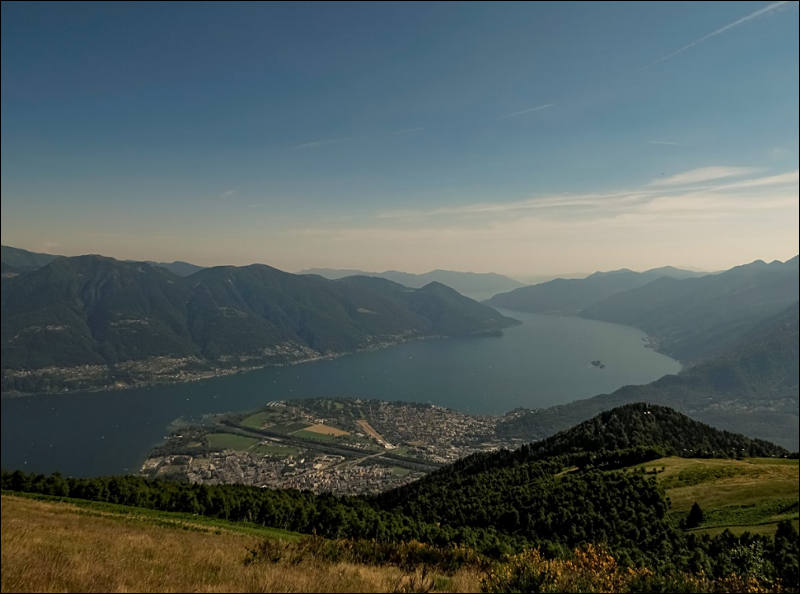

 sa4331.jpg800 x 594 - 57K
sa4331.jpg800 x 594 - 57K -
This is such a dumb release, it's like they've updated nothing at all, except for silly filters, why even bother.
-
No, lots of improvements - but it is a GX9 repackaged in the LX100 body. Underwhelming because of the lack of a flip screen, no EVF improvement, and the same big crop in video that killed the GX9 for me.
-
It is still region locked camera and they do not care about video guys much, check 15 minutes limit.
Just don't give a fuck.
Still some at PR has little brain left and shifted announcement date a little.
-
Hands-on
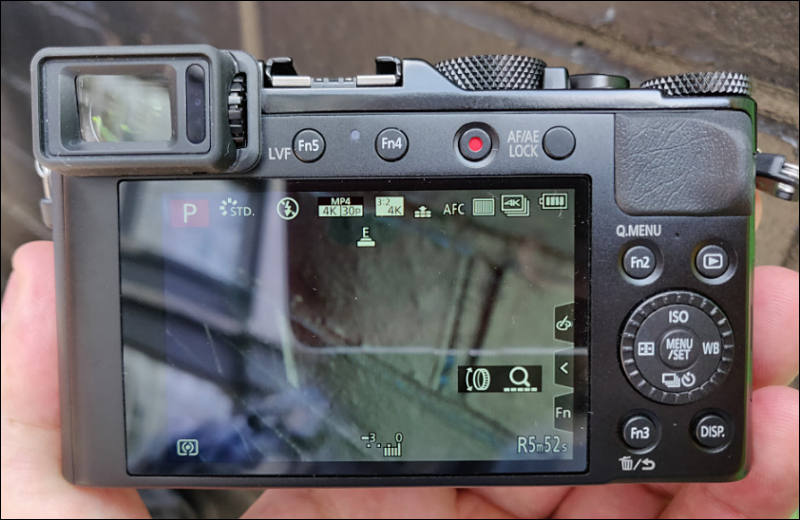

 sa4335.jpg800 x 520 - 63K
sa4335.jpg800 x 520 - 63K -

 sa4336.jpg800 x 589 - 103K
sa4336.jpg800 x 589 - 103K -
Well, there is no mic jack, yet again! So that pretty much automatically kills it as a consideration for a lot of increasingly frustrated people, including myself.
I just want a better than cellphone camera that is nice and compact, but with a mic input so I can do quick and dirty vlog! None of the Sony RX100 have this, was a perfect chance for Panasonic to leap in and steal a niche for themselves! Especially if its screen had also flipped out.
-
I'm very disappointed in this LX100 II. First, no tilting screen. Touch screen was fine addition but no moveable screen like the GX9. Most likely a tilting screen would effect GX9 sales. I laugh at the comparisons with the original LX100 and the canon and sony 1" sensors cameras. Nobody talks about the LX15/10 compaison, which is the most important comparison IMHO. A small compact camera that shoots 4K (15 minutes is fine). The LX15 has a 20mp 1" sensor but also crops the video like the GX9 and LX100 II. One reveiwer talked about the video crop in the LX100 makes it the same size as the 1" sensor on Sony (same one in LX15/10). LX15 has tilting screen, 4K, touch screen. Sure the LX100 II has 20mp MFT sensor but uses only a part of the sensor the size of a 1". So the LX100 II shoots still images in 17mp vs 20mp for LX15. I really doubt the video is so different between the two cameras with their crops. So why choose the LX100 II over the LX15/10? I will not be trading my LX15/10 in for a LX100 II.
-

 sa4747.jpg800 x 534 - 70K
sa4747.jpg800 x 534 - 70K -

 sa5086.jpg800 x 570 - 89K
sa5086.jpg800 x 570 - 89K -
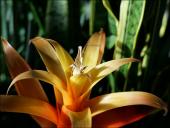
 sa5164.jpg800 x 603 - 60K
sa5164.jpg800 x 603 - 60K
Howdy, Stranger!
It looks like you're new here. If you want to get involved, click one of these buttons!
Categories
- Topics List23,992
- Blog5,725
- General and News1,354
- Hacks and Patches1,153
- ↳ Top Settings33
- ↳ Beginners256
- ↳ Archives402
- ↳ Hacks News and Development56
- Cameras2,367
- ↳ Panasonic995
- ↳ Canon118
- ↳ Sony156
- ↳ Nikon96
- ↳ Pentax and Samsung70
- ↳ Olympus and Fujifilm101
- ↳ Compacts and Camcorders300
- ↳ Smartphones for video97
- ↳ Pro Video Cameras191
- ↳ BlackMagic and other raw cameras116
- Skill1,960
- ↳ Business and distribution66
- ↳ Preparation, scripts and legal38
- ↳ Art149
- ↳ Import, Convert, Exporting291
- ↳ Editors191
- ↳ Effects and stunts115
- ↳ Color grading197
- ↳ Sound and Music280
- ↳ Lighting96
- ↳ Software and storage tips266
- Gear5,420
- ↳ Filters, Adapters, Matte boxes344
- ↳ Lenses1,582
- ↳ Follow focus and gears93
- ↳ Sound499
- ↳ Lighting gear314
- ↳ Camera movement230
- ↳ Gimbals and copters302
- ↳ Rigs and related stuff273
- ↳ Power solutions83
- ↳ Monitors and viewfinders340
- ↳ Tripods and fluid heads139
- ↳ Storage286
- ↳ Computers and studio gear560
- ↳ VR and 3D248
- Showcase1,859
- Marketplace2,834
- Offtopic1,320













